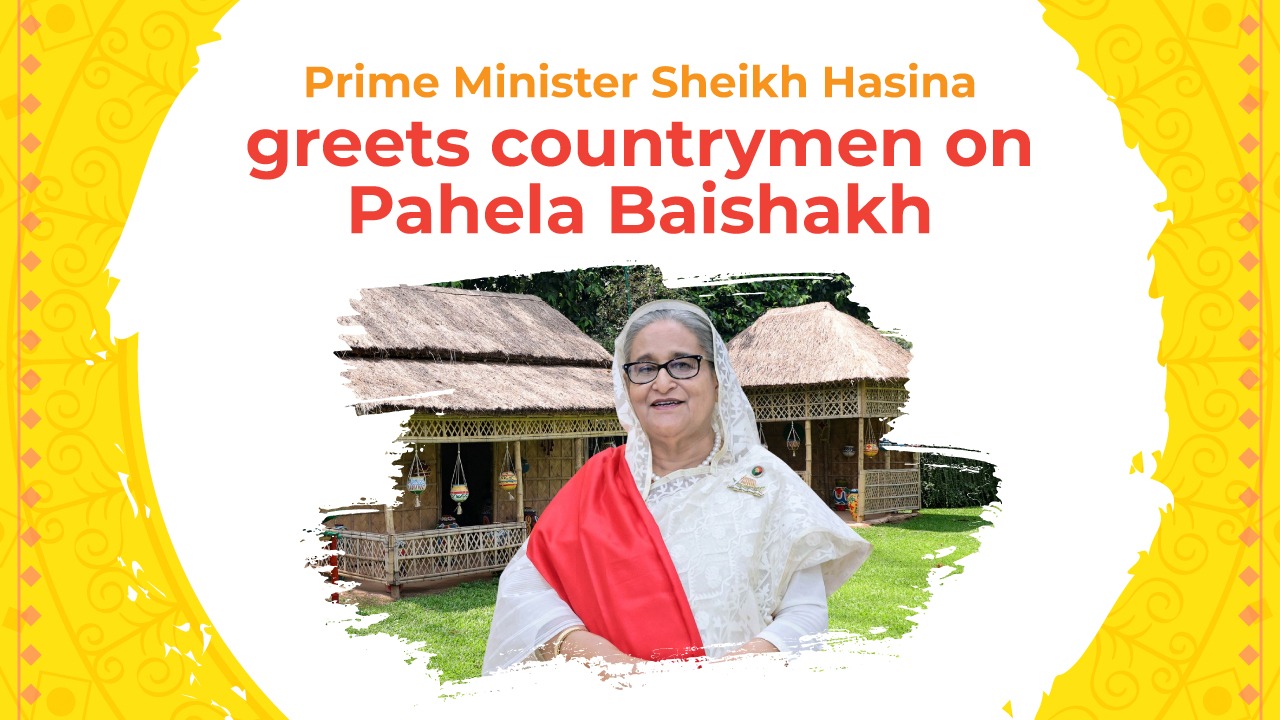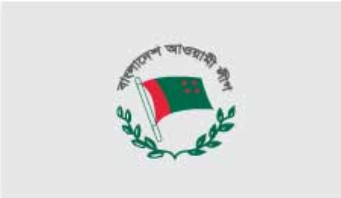3168
Published on April 5, 2017Bangladesh is progressing rapidly on the development highway since Bangladesh Awami League has come to power in 2009. Under the visionary leadership of Prime Minister Sheikh Hasina, the improvement in all major economic, social and human development indicators is surprising the world. Implementing the pledge of making Bangladesh a middle-income country by 2021, Bangladesh’s economy is now growing over 7% annually and became a lower middle-income country in 2015, six years before the pledged deadline. The country is now en-route to become a developed country by 2041 as it’s now the 31st largest economy in the world and predicted to become 28th largest by the end of 2030.
Till 2017, Bangladesh has made remarkable progress in social inclusion, poverty alleviation, infrastructural development, more public access to the internet and digital services, ensuring quality education. The poverty rate in the country has come down to 22.4% from 38.4% in 2006 and extreme poverty came down to 12% from 24.2%. It has become self-sufficient with food, providing quality education to its children and ensured quality health services in rural areas with community clinics and free distribution of medicine. To meet the growing demand for electricity, Bangladesh has taken mega power projects like Rooppur Nuclear Power Plant and Rampal Coal-powered Power Plant. The current government pledged, in 2014, to ease the road connectivity between its central region and southern region by building the largest bridge over the river Padma by 2018. This dream project of 20 million people, namely Padma Multipurpose Bridge, is the largest ever in the history of Bangladesh and is completely being financed by the government. Almost 40% work of the bridge has been completed.
In this course of development and progress, Bangladesh has also become an important and responsible member of the international community. Under the Awami League Government’s motto of ‘Friendship with All, Malice for None’ and Prime Minister Sheikh Hasina’s 21st-century style of proactive diplomacy, the country has maintained an active international profile, especially since 2009. One of the thrusts of the current Government’s foreign policy has been enhanced ties with neighbours and increased regional connectivity. As a result, in recent years, Bangladesh has given the utmost important to its relations with its closest neighbour India, the country with which it shares a 2,545-mile-long international border, the fifth-longest land border in the world.
Given the historic, cultural and economic ties between India and Bangladesh, the two countries have always been more than neighbours, sharing not only common borders and rivers but also culture, language and heritage that was further bonded by shared memories and sacrifices during Bangladesh’s Liberation War. Since the Awami League-led government assumed power in Bangladesh in 2009, India-Bangladesh relations have continuously been elevated to newer heights. In recent years, cooperation between the two countries reached new peaks in such sectors as settling historical disputes, landmark diplomacy, bilateral and regional connectivity, power and energy, combating crimes and terrorism, trade and commerce, and management of water resources.
This report looks at some of the significant developments in Bangladesh-India relations, which have helped to transform the bilateral ties under the successive Awami League governments led by its leader Prime Minister Sheikh Hasina, especially in the last eight years, from that of neighbours to close partners.
Diplomatic Breakthroughs
Land Boundary Agreement: Due to the efforts of the current government and especially the determined focus of HPM Sheikh Hasina, one of the most perplex and longstanding border issues in the world was brought to a successful resolution in 2015 through the signing and implementation of the ‘Land Boundary Agreement’ (LBA) between Bangladesh and India. Although the deal was originally signed between Bangabandhu Sheikh Mujibur Rahman and the then Indian Prime Minister Indira Gandhi in 1974, successive governments in both countries could not tackle the political issues to successfully implement it. Hence, HPM Sheikh Hasina placed the resolution of the LBA as a top priority in her bilateral diplomacy strategy with India since coming to power in 2009.
Following Prime Minister Narendra Modi’s visit to Bangladesh between June 6-7, 2015, during which time the 2011 Protocol and Instruments of ratification were exchanged, the path was paved for concluding the process. As a result, residents of 111 Indian enclaves in Bangladesh and 51 Bangladeshi enclaves in India have been exchanged and enclave residents on both sides of the border can now, for the first time, enjoy the benefits of the nationality of India or Bangladesh, as the case may be. They can now access civic services, education, health-care and other facilities provided by the two Governments to their respective nationals. It was a watershed moment on the morning of 1 August 2015 as the 68 years of stateless existence for over 51,000 enclave dwellers ended with hopes of a new beginning.
Ganges Water Sharing Treaty: India and Bangladesh share 54 common rivers. A bilateral Joint Rivers Commission (JRC) has been functioning since June 1972 to maintain liaison between the two countries to maximize benefits from common river systems. During the first tenure of Sheikh Hasina as the Prime Minister of Bangladesh, the Ganges Water Sharing Treaty was signed between the two countries on December 12, 1996. This agreement was signed in the Indian capital of New Delhi by the then Indian Prime Minister H. D. Deve Gowda and the Bangladeshi Prime Minister Sheikh Hasina. The treaty established a 30-year water-sharing arrangement and recognized Bangladesh’s rights as a lower-level riparian. This was a successful bilateral diplomatic move as the issue had remained pending since 1982 for almost 14 years.
Maritime Boundary Delineation: By successfully arguing its case in the Hague-based Permanent Court of Arbitration in 2015, Bangladesh and India settled their long-standing maritime boundary dispute, and in the process, Bangladesh secured 19,467 square kilometres out of 25,602 sq km disputed area in the Bay of Bengal. Not only has the verdict settled the dispute, it has also opened up possibilities for amicable bilateral cooperation in the Bay of Bengal between the two countries, from which both countries stand to benefit. This is a very good example of a mature bilateral relation which looks at the long-term prospects of enhanced cooperation.
Diplomatic And High Profile Visits
High profile visits by dignitaries of the respective have always been noticeable under successive governments of Sheikh Hasina. The Prime Minister of India, Shri Atal Bihari Vajpayee, accompanied by a delegation which included the External Affairs Minister, Minister for Railways and Surface Transport and Chief Minister of West Bengal visited Dhaka on 19 and 20 June 1999. The visit heralded a new dimension in bilateral relations and represented a significant step in facilitating people-to-people interaction between the two countries, after a hiatus of around 21 years.
Since Awami League assumed power in 2009, a number of landmark visits have taken place between the highest dignitaries of Bangladesh and India and high-level diplomacy has been infused with new levels of activism. This started with Prime Minister Sheikh Hasina’s visit to India in January 2010 followed by the then Indian Prime Minister Manmohan Singh’s visit to Bangladesh in September 2011. During this visit, the two countries signed the landmark Framework Agreement on Cooperation for Development, which reiterated the base for India-Bangladesh relations in light of a new era.
Manmohan Singh’s visit was followed by the visit of the Indian President Pranab Mukherjee to Bangladesh in March 2013, on his first trip abroad since assuming this post, standing testimony to the significance of the relationship between the neighbours. By the same token, Bangladeshi President Abdul Hamid paid an official visit to India from 18 to 23 December 2014. Additionally, on her first overseas assignment after assuming the office of Indian Minister for External Affairs, Sushma Swaraj visited Bangladesh in the last week of June 2014 had provided further momentum to the close and friendly relationship between India and Bangladesh.
Such visits opened a new chapter in the bilateral relations between the two countries. A new dawn of strengthening the existing relations was ushered with the visit of Indian Prime Minister Narendra Modi in June 2015. Leaders of the two countries also meet each other whenever the time permits on the sidelines of multilateral forums, the meeting during the BRICS-BIMSTEC Leaders’ Outreach Summit in Goa in October 2016 being the latest such instance.
To regularize high-level policy discussions and negotiations, Bangladesh and India have started the Foreign Minister level Joint Consultative Commission (JCC) meetings from 2012. Bangladesh and India are also holding regular Joint Working Group meetings, in such areas as jute and textiles, fisheries, health sectors and customs. Regular bilateral consultations are taking place from official level to Secretary level to Minister level.
People To People Contacts
Visits and Residence: People to people contacts between the two countries are now taking place at a rate faster than ever before. A record number of tourists from Bangladesh visited India in 2016. More than one million visas were issued by the Indian High Commission in 2016 for Bangladeshi nationals. This increase in travel is due to ease of access, simplification of procedures and better efforts to reach out to people all over Bangladesh who wish to travel to India by the Indian authorities. No one in Bangladesh with a confirmed journey ticket to India needs a prior appointment date to submit visa application now. A visa camp before the Eid holidays in June 2016 was organised by the Indian HC and more than 55,000 people got visas under the scheme. A similar camp was organised for students in October. About 10,000 Indian citizens are estimated to be living in Bangladesh for work and business purposes. Most are engaged in the Ready Made Garments (RMG) sector or as professionals in MNCs, Indian or Bangladeshi companies.
Culture and Education: Cultural cooperation between the countries has also been at their highest level in recent years. The Indira Gandhi Cultural Centre in Dhaka has been regularly organizing cultural activities since 2010. The IGCC also holds regular training courses in Yoga, Hindi, Hindustani Classical Music, Manipuri Dance and Painting. The courses are popular with Bangladeshi students. ICCR has instituted a Tagore Chair in Dhaka University since 2011. A 100-member Youth Delegation visits India annually since 2012. During Prime Minister Narendra Modi’s visit, a cultural exchange pact was signed between the countries for screening Bangladeshi programmes on Indian television.
Scholarships are being granted by ICCR every year to students from Bangladesh for pursuing general courses in arts, sciences, engineering and also specialized courses for culture, drama, music, fine arts and sports etc. Scholarships and training programmes under ITEC, TCS of Colombo Plan, ICCR, AYUSH, Commonwealth, SAARC and IOR-ARC scholarships/ fellowship schemes are being offered to Bangladeshi nationals. Muktijoddha Scholarship Scheme has been extended by the Government of India to Higher Secondary level students (200 scholarships) and Graduate-level students (478 scholarships). Bangladeshi Diplomats have also imparted training at Foreign Service Institute, New Delhi in 2011.














